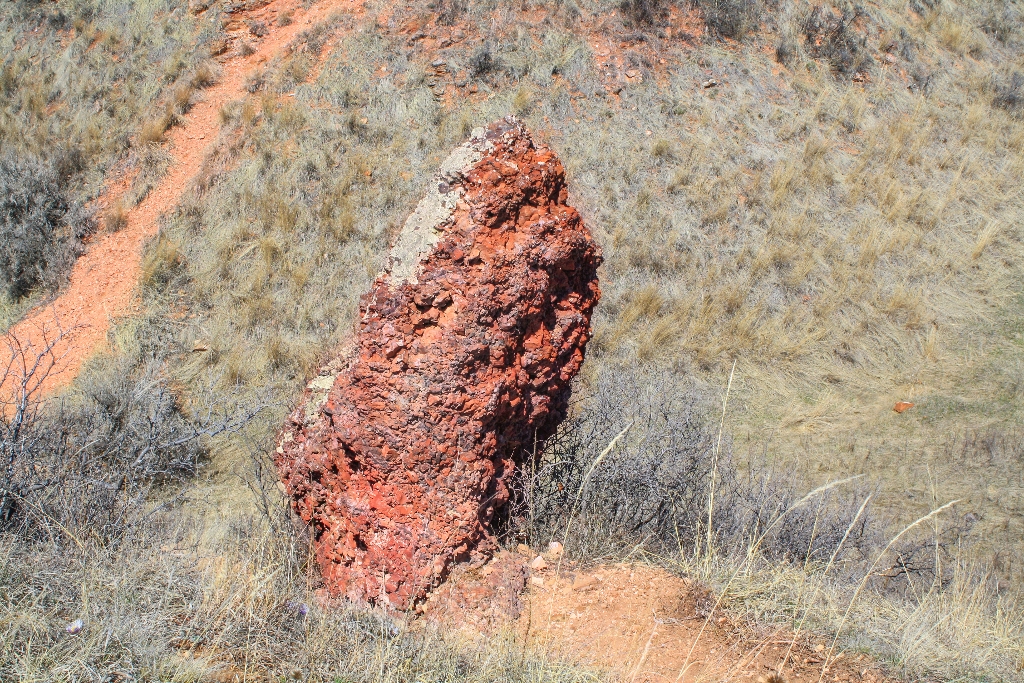
What is unusual about the massive piece of clinker in front of you?
Fires need oxygen, even when they are burning underground. As the coal fire burned deep into the hillside, cracks in the rock layers allowed air to be sucked down into the fire. Fire burned up the cracks and baked the rocks nearby, forming vertical "chimneys." Chimneys are the hottest part of the coal fire and bake the rock inside into a very hard clinker called porcellanite which is especially resistant to erosion.
This chimney you are looking at was exposed when softer sediments around it eroded away.
There are many signs that large coal vein fires have burned throughout the park in the past. Even today, coal fires can sometimes be found shaping and changing the landscape of the badlands.
Geology is not only a study of the past; it is an ongoing process.
Fires need oxygen, even when they are burning underground. As the coal fire burned deep into the hillside, cracks in the rock layers allowed air to be sucked down into the fire. Fire burned up the cracks and baked the rocks nearby, forming vertical "chimneys." Chimneys are the hottest part of the coal fire and bake the rock inside into a very hard clinker called porcellanite which is especially resistant to erosion.
This chimney you are looking at was exposed when softer sediments around it eroded away.
There are many signs that large coal vein fires have burned throughout the park in the past. Even today, coal fires can sometimes be found shaping and changing the landscape of the badlands.
Geology is not only a study of the past; it is an ongoing process.
Is there something we missed for this itinerary?
Itineraries across USA

Acadia

Arches National Park

Badlands

Big Bend

Biscayne

Black Canyon Of The Gunnison

Bryce Canyon

Canyonlands

Capitol Reef

Carlsbad Caverns

Channel Islands

Congaree

Crater Lake

Cuyahoga Valley

Death Valley

Dry Tortugas

Everglades

Gateway Arch

Glacier

Grand Canyon

Grand Teton

Great Basin

Great Smoky Mountains

Guadalupe Mountains

Haleakalā

Hawaiʻi Volcanoes

Hot Springs

Indiana Dunes

Isle Royale

Joshua Tree

Kenai Fjords

Kobuk Valley

Lassen Volcanic

Mammoth Cave

Mesa Verde

Mount Rainier

North Cascades

Olympic

Petrified Forest

Pinnacles

Rocky Mountain

Saguaro

Shenandoah

Theodore Roosevelt

Virgin Islands

Voyageurs

White Sands

Wind Cave

Yellowstone

Yosemite

Zion